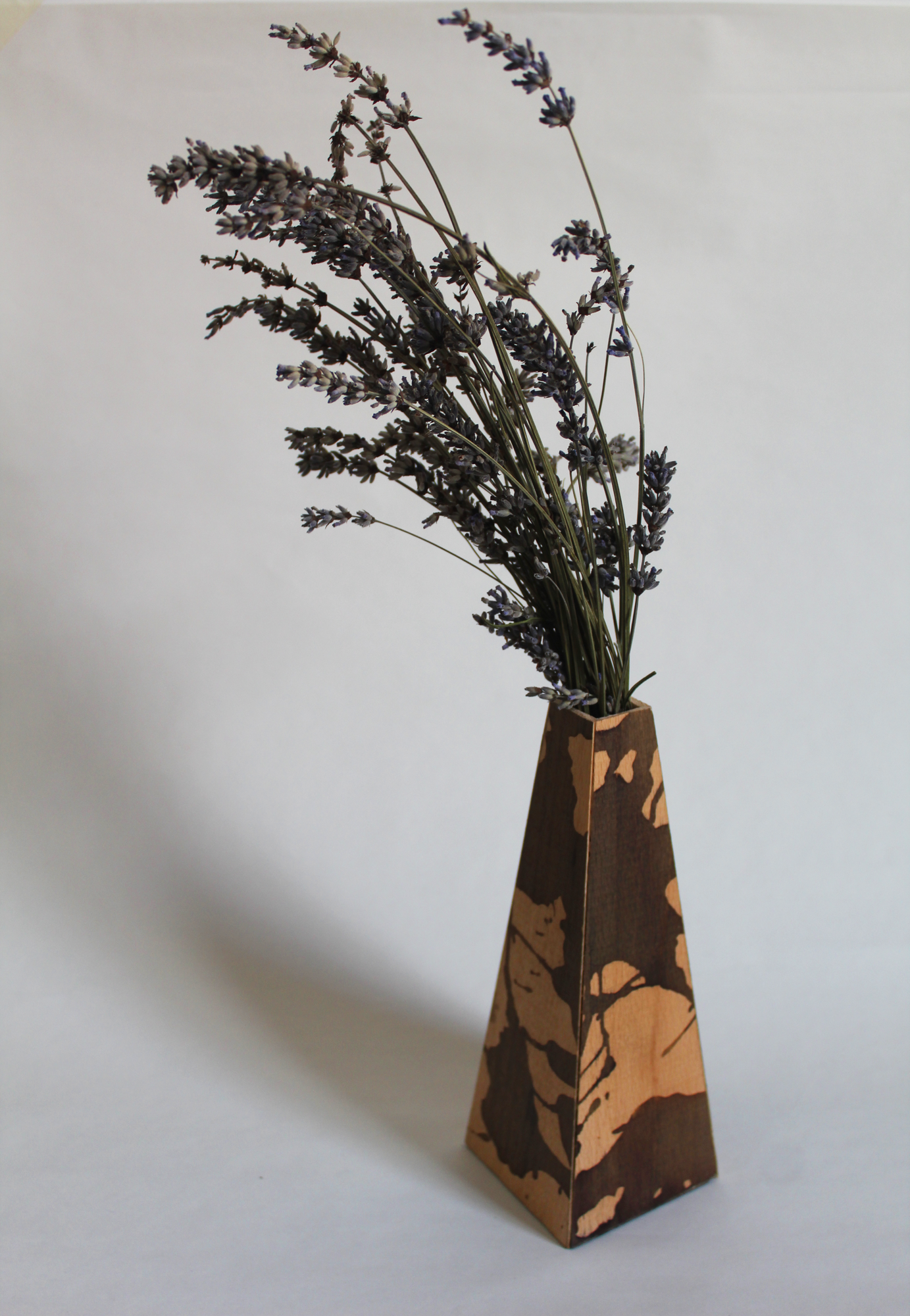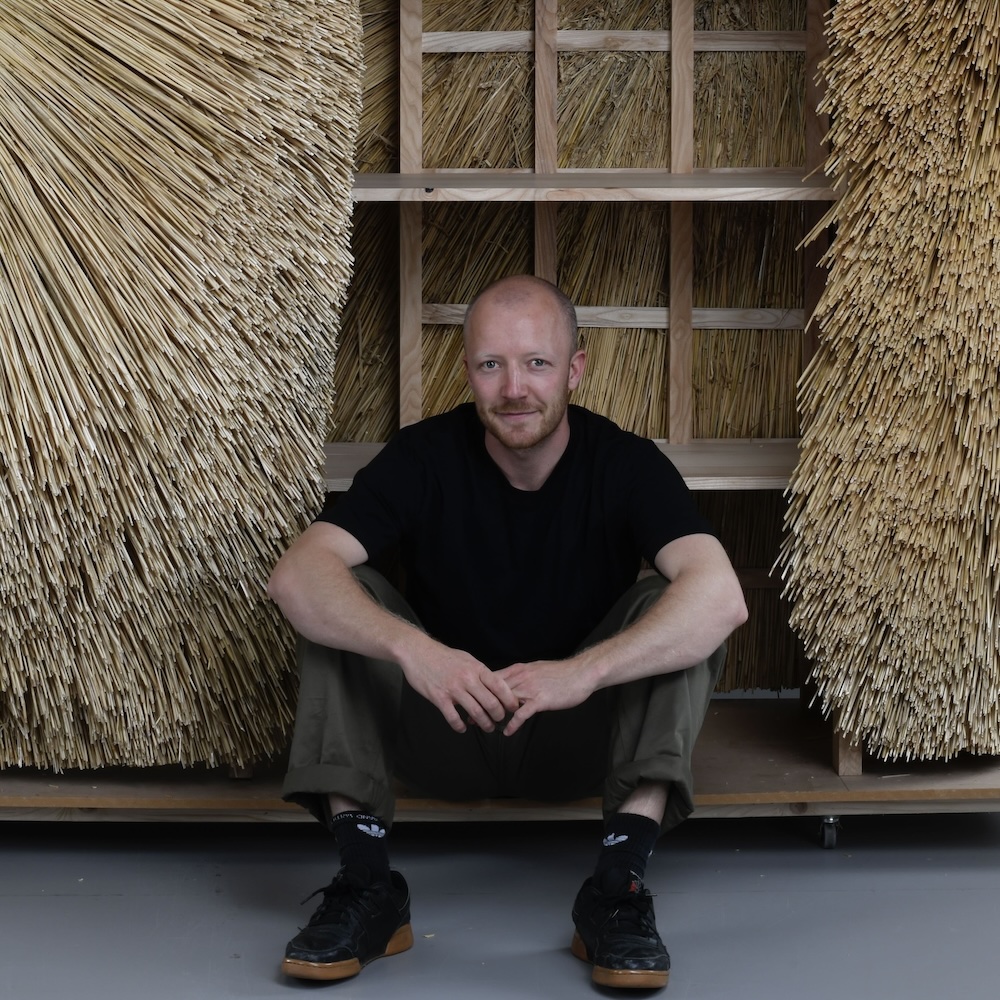Ebon
Category: Furniture
Ebon is product range which looks to take a fresh perspective on the age old process of Ebonizing timber to stain the surface. My consideration for the process of ebonizing, is to use a vinegar and wire wool solution (creating Iron Acetate) as a material to create patterns, like a paint. To create products which have a unique style and pattern which are free of petrochemical based products. Within the associated imagery you will see I used a four sided dried flower vase to provide the opportunity to display my take on the process and showcase the material pattern/effect created. For further development of this product range I am looking to expand the applications of this product range, by creating large statement vases, coffee table tops and the consideration of pendent lamps. If this product goes on to win I would Design documentation: The design process for this is split into two parts, one designing the object upon which the application of ebonizing will be made and the second is creating the ebonizing pattern/effect. Within the making process, in this case for the vase, the ebonizing is the primary step and then the object is created from the material which is ebonized. 1 Create ebonizing solution Place steel wool into a vessel and cover with vinegar. Leave for three days to ensure the required reaction is complete. 2 Prepare the Beech timber Ensure the beech timber is sanded to appropriate level and cut to relevant size to apply the ebonizing solution. 3 Apply ebonizing solution to Beech timber Apply the solution to the Timber surface. In this example, and as seen in image of vase containing dried lavender; pour small puddles of the solution around the surface of the timber, and then tilt the timber in all directions to enable the liquid to flow between the puddles creating a unique and natural pattern on the surface. 4 Cut timber to designed dimensions Using the designed demensions cut the required timber. In this example, cut 45-degree edges and to the four side panels, cut a sli 5 Sand timber Sand timber to appropriate level, ensuring this doesn’t remove layer of stained timber. 6 Construct and Glue Product Assembled product, bringing sheet material together to construct the 3d product. Using wood glue and strapping to ensure a strong construction 7 Vanish/Oil Product Material breakdown: As seen in the associated imagery, I have tested this process on a variety of timbers to identify the strengths and weaknesses of the timber choices. Leading me to the current position of defining Beech to be the best timber for this application and process. Beech was selected due to the tight grain and low pourosity of the timber, which reduced the bleeding of the stain and created crisp lines between stained and unstained areas of timber. While the secondary material choice is the solution which can be made using vinegar (a natural resource) and iron which reacts to create the required solution for ebonizing.


 Copy URL
Copy URL
 Login to Like
Login to Like 